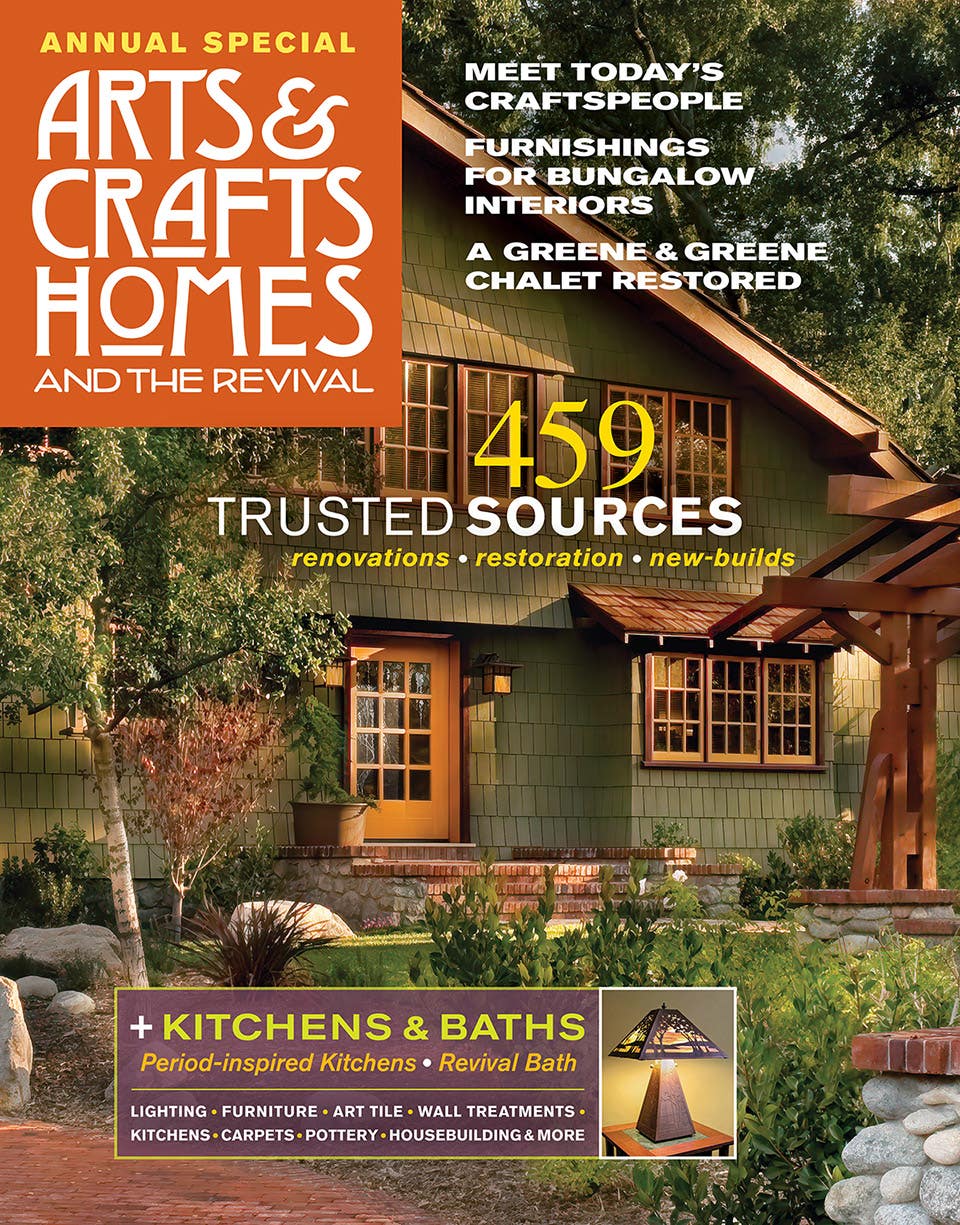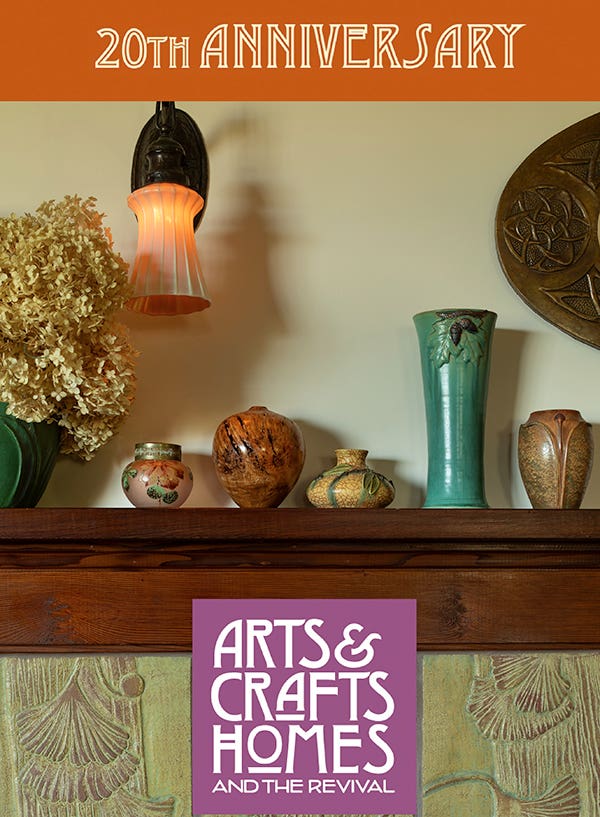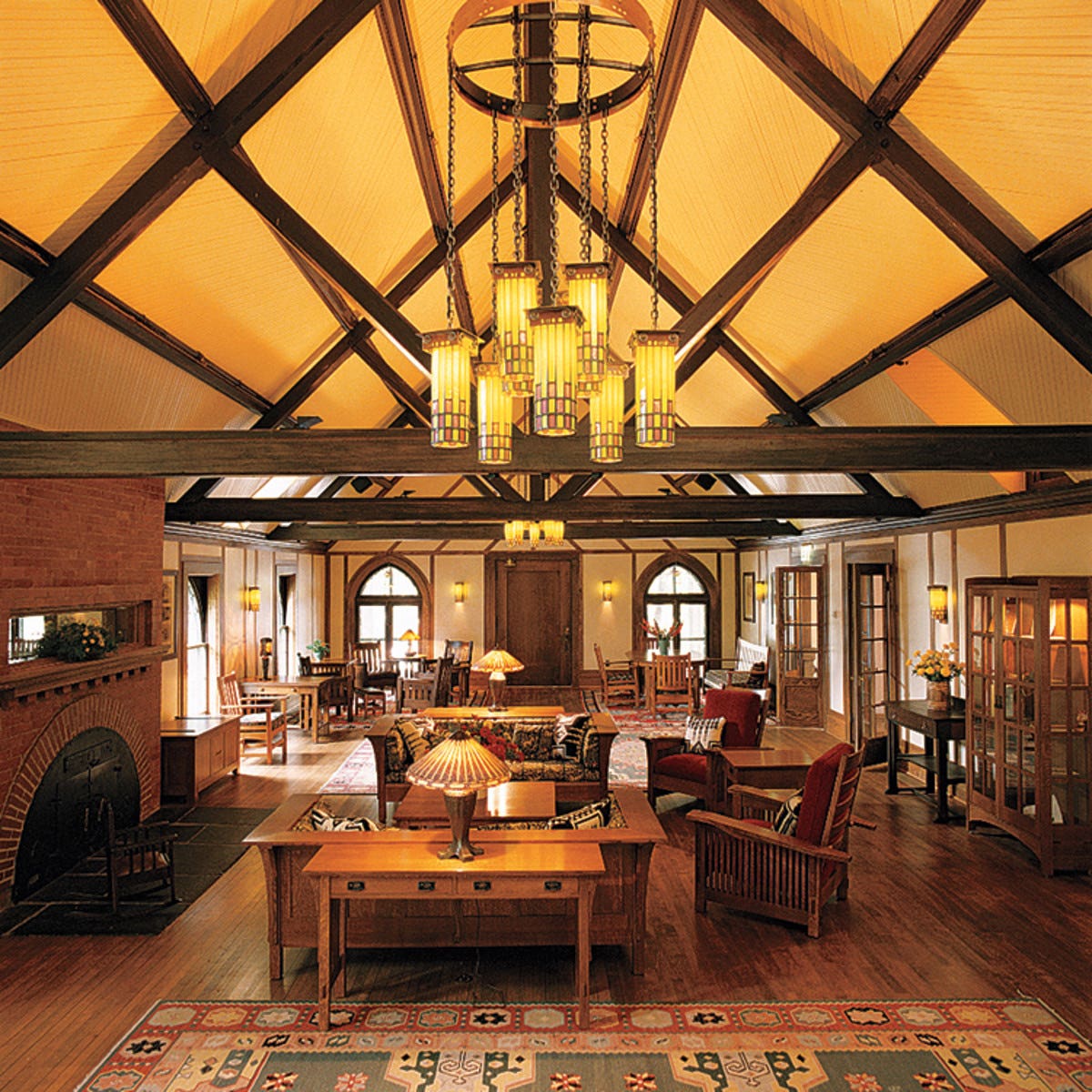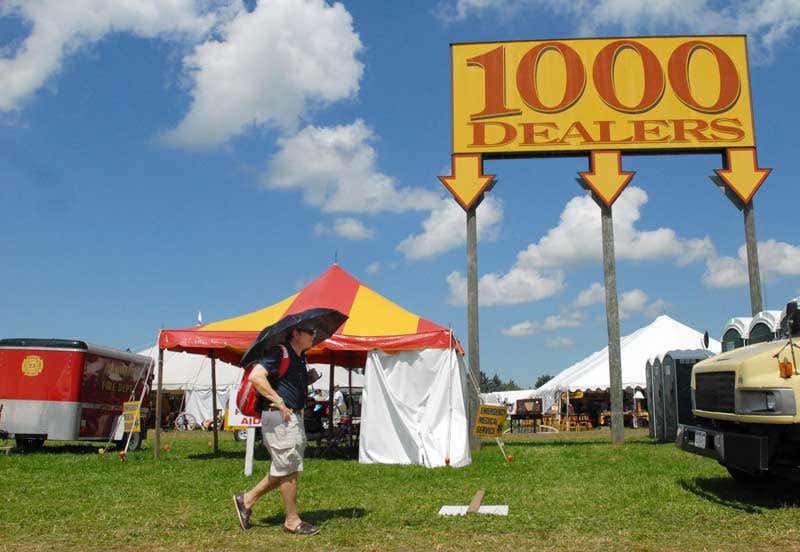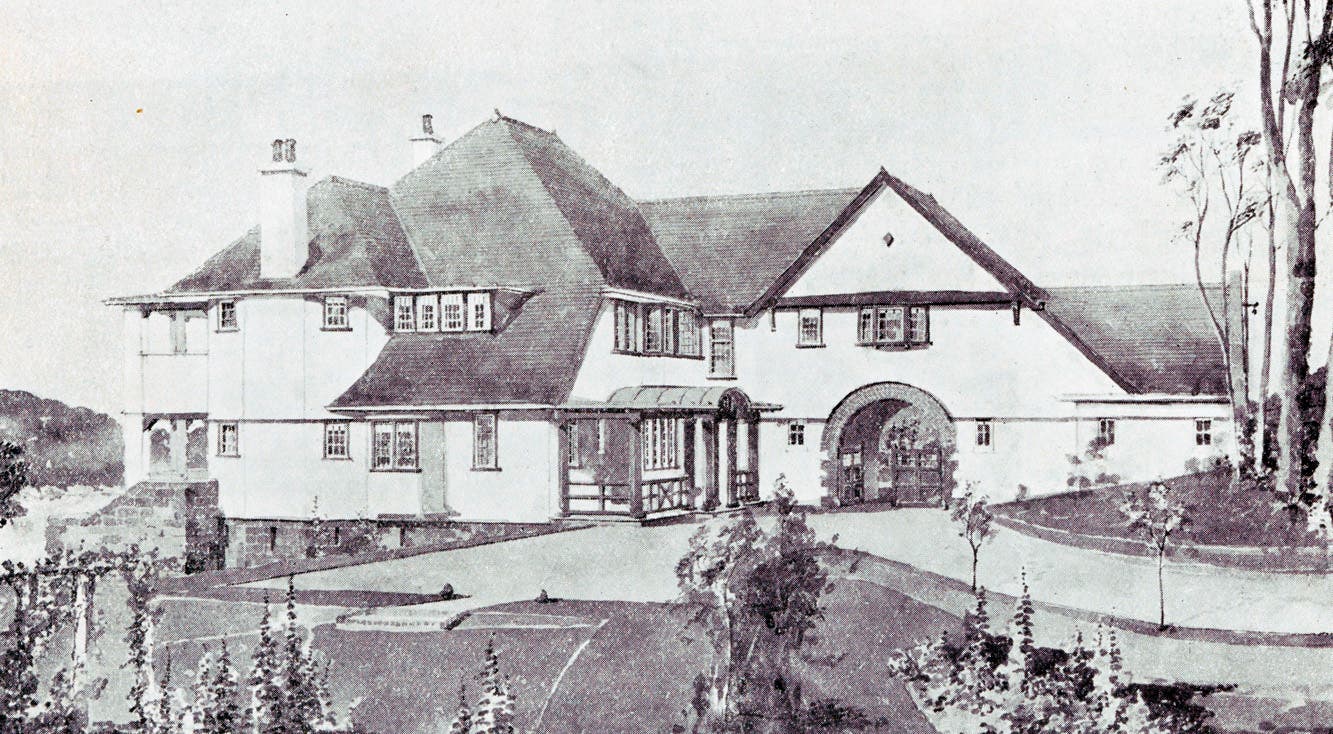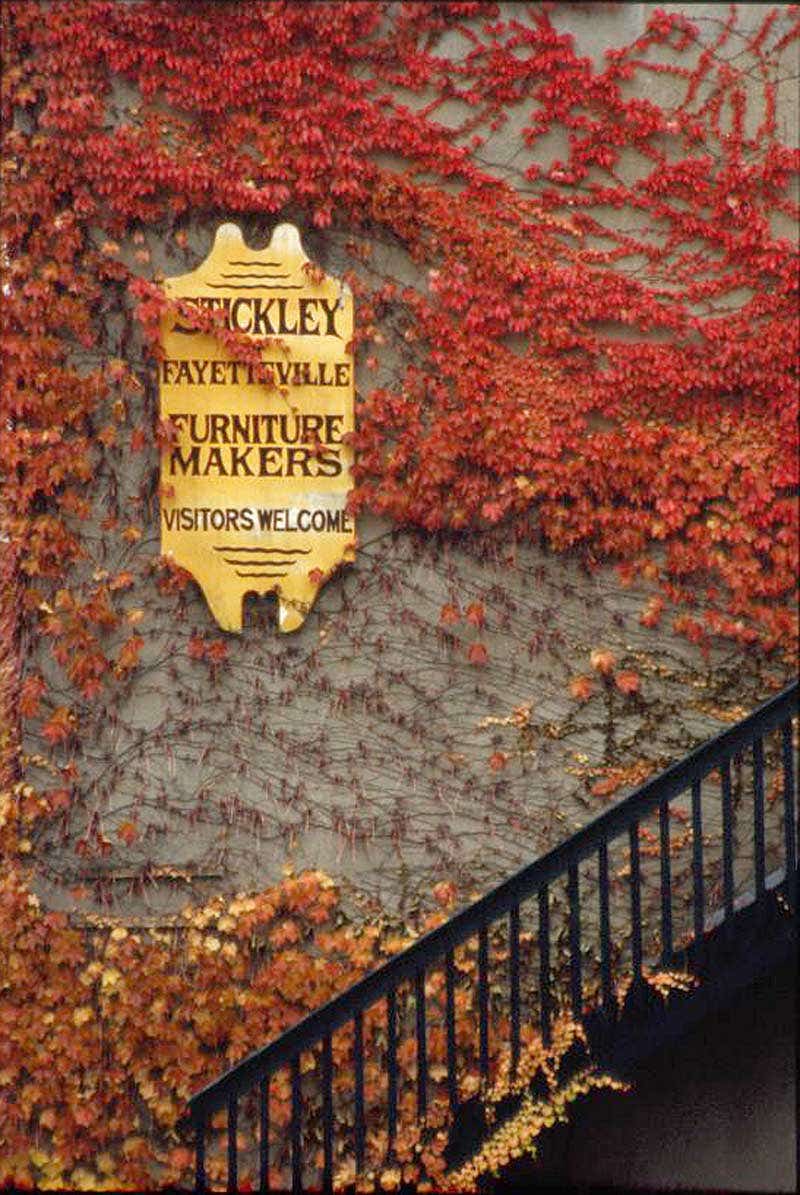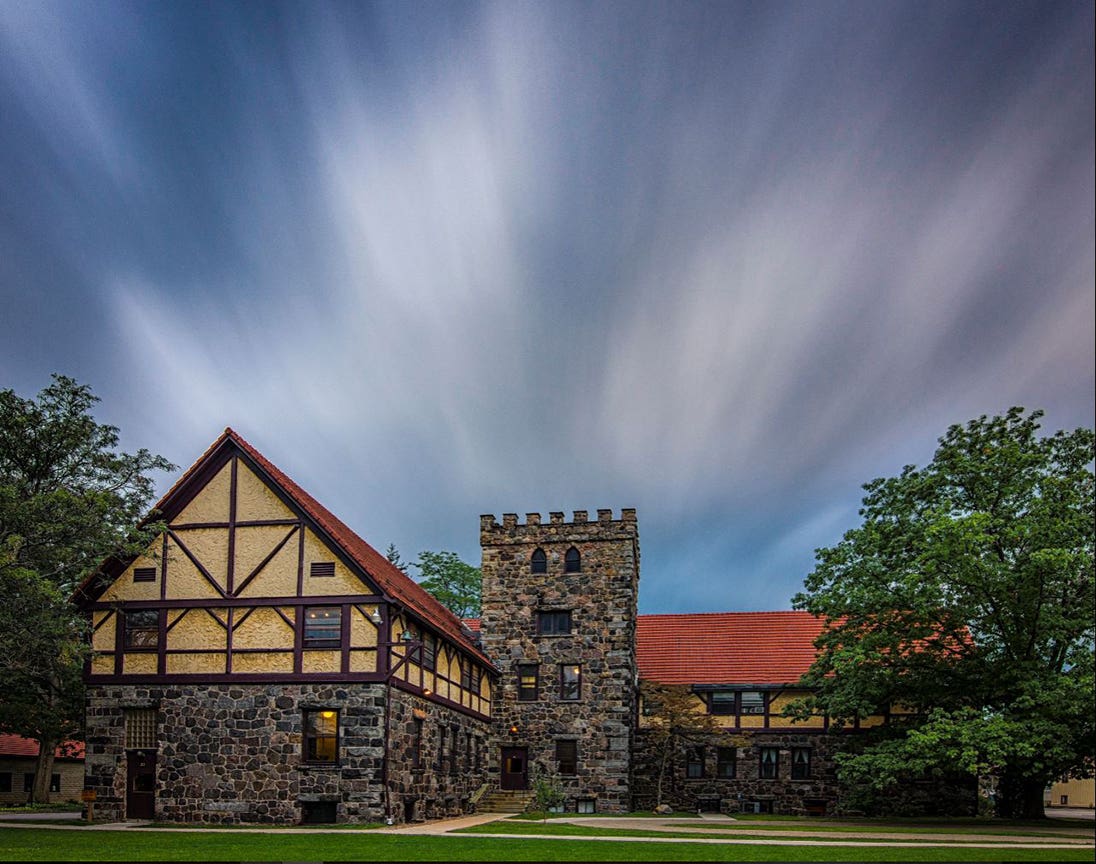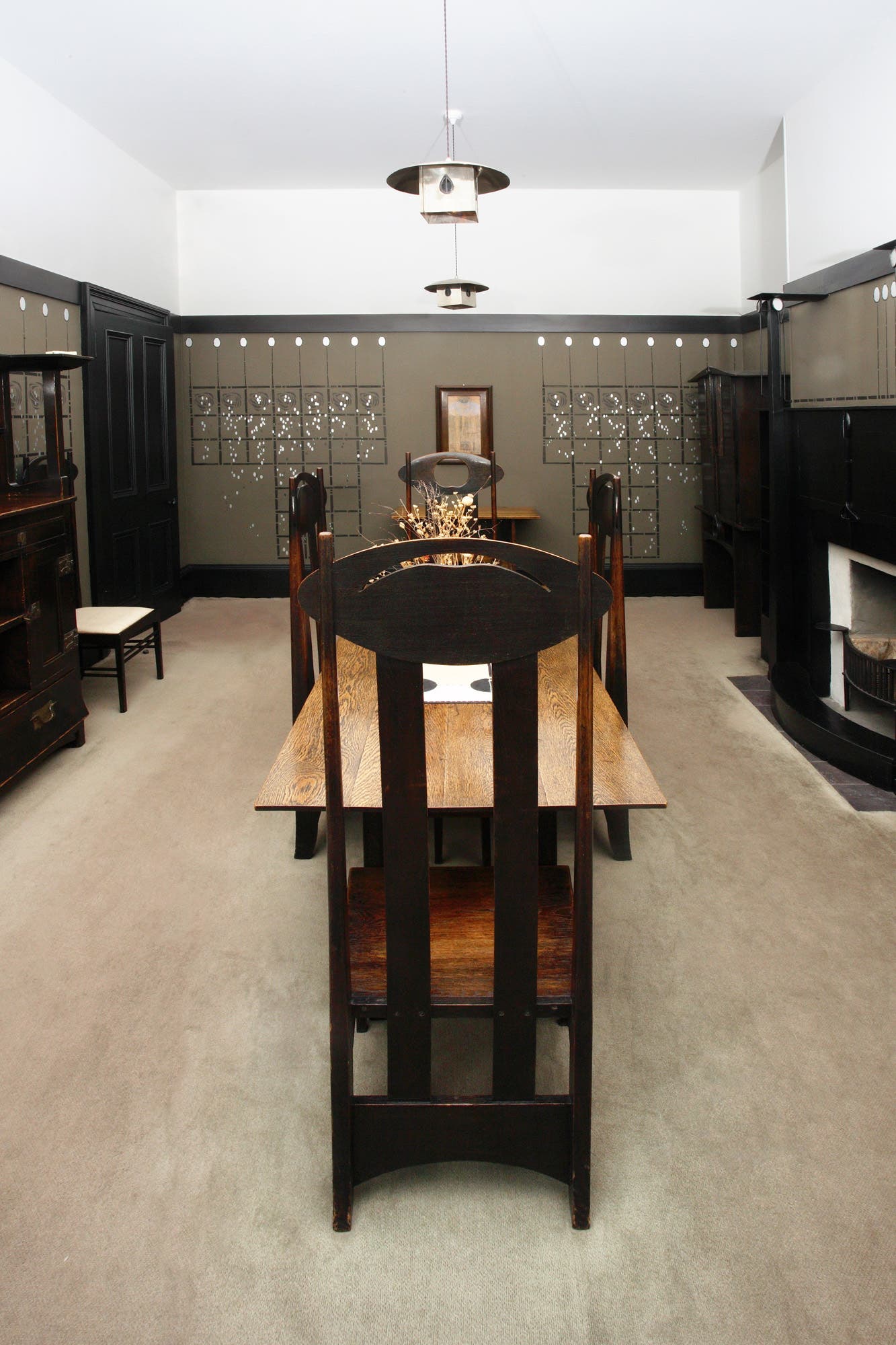London and Nearby
What to see in the crucible of the English Arts and Crafts Movement.
Writing a book, I’ve found, is an excellent excuse to travel. Research for Historic Arts and Crafts Homes of Great Britain (Gibbs Smith, 2005) necessitated a number of trips to the U.K. I was lucky enough to discover many fascinating sites important to the history of the Arts and Crafts movement. You should go.
Here I’ll confine myself to sites in and just around London. I recommend spending your first couple of days in the city, acclimating to the time change and avoiding car trips. A good way to start is with a few museums on a Friday. You must spend time at the V&A (the Victoria & Albert Museum); spend a morning and then have lunch or tea in the Luncheon Rooms (original decoration by Morris & Co.!) at the rear of the Museum. That afternoon, visit one of my favorites, the De Morgan Centre (demorgan.org.uk). Located in a Victorian library in Wandsworth in southwest London, the gallery features paintings by Evelyn De Morgan, wife of William De Morgan and an important Pre-Raphaelite artist, along with her husband’s ceramics. (A word of caution: public transport is not good in this section of London so the best way to get there is by taxi).
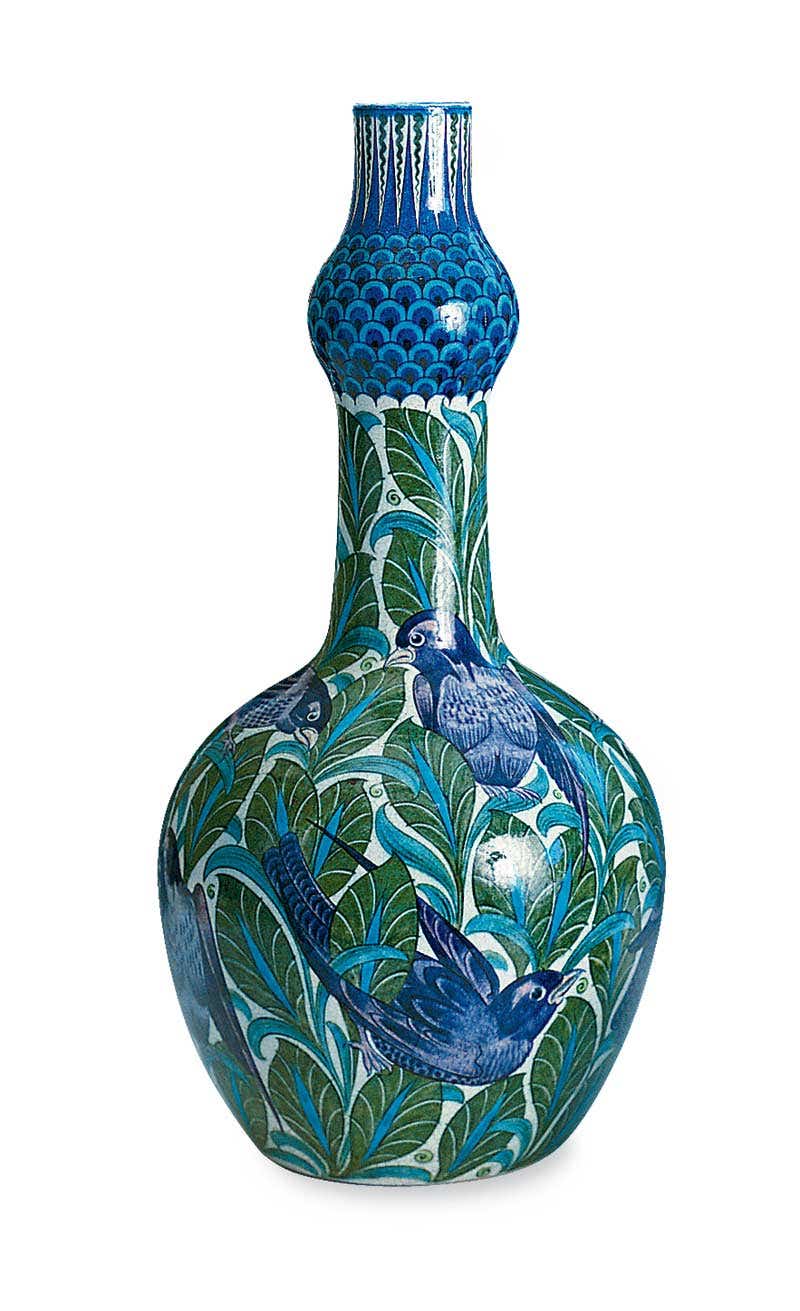
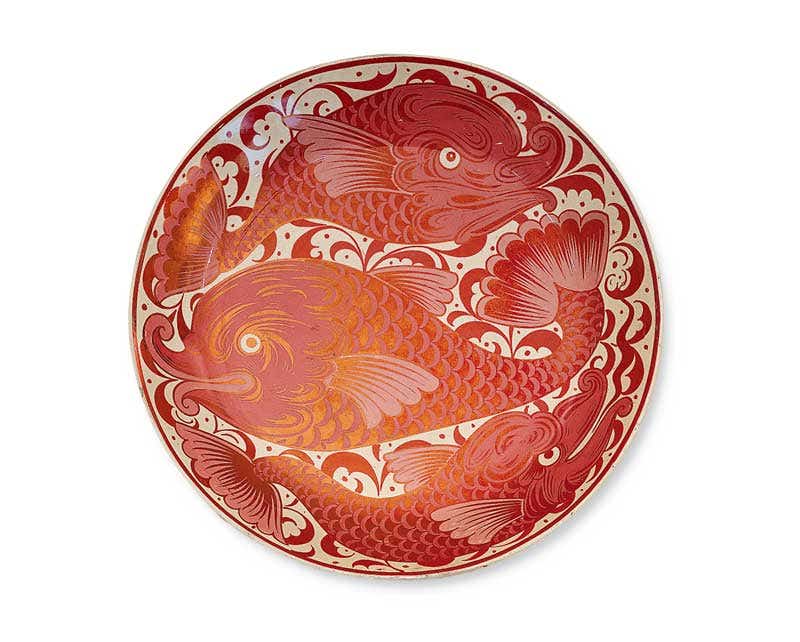
Must Sees
Touristy or not, a very nice way to end the day is a ride on the London Eye (londoneye.com), a 140 m. rotating observation wheel built for the Millennium Celebration. All of London spread before you: beautiful at night.
Another museum to work in, perhaps on an afternoon later in your stay, is the William Morris Gallery (walthamforest.gov.uk/william-morris) in the suburb of Waltham. Well worth the 30-minute train ride from central London, it is the childhood home of Morris and the only museum dedicated solely to his work.
If you are in London on a Saturday, do a little antiquing that morning at Portobello Market. Three keys to a good experience: arrive before 11 a.m. (after which it becomes impossibly crowded); bring something warm to wear even in the summer; don’t be afraid to bargain. Take in a pair of house museums in the afternoon in nearby Holland Park: Leighton House (rbkc.gov.uk/subsites/museums.aspx), the exotic home of the famous Victorian painter Lord Frederick Leighton, with its Arab Hall of Persian tiles and a frieze by Walter Crane; and, a few blocks away, the Linley Sambourne House (home of the late 19th century cartoonist), which survives with nearly all of its original décor intact.
Now that you are remembering to look to the right when you cross the street, you can safely venture out of London. Several icons of the British Arts and Crafts movement are easy day trips from central London, either by train and taxi or by driving. I confess I do not trust myself to drive and so have used the services of Arts and Crafts Tours of Great Britain; this is a quicker way to travel than relying on often-sketchy public transport.
An absolute must, in my book: drive 90 minutes southwest of London to Guildford in Surrey to visit the Watts Chapel and Gallery (wattsgallery.org.uk/watts-chapel). Dedicated to the Arts and Crafts ceramic artist Mary Watts and her husband George Frederick Watts, a famous painter, the Gallery is a step back in time as little has changed since it opened in 1905. Don’t miss the Chapel, a tour-de-force of Art Nouveau ceramic panels and tiles. The tearoom at the Gallery with its homemade cakes is excellent for lunch. Then hop back in your car and head southeast to Standen, about an hour’s drive through the picturesque Sussex countryside. Designed by Philip Webb between 1892 and 1894, it is one of the few remaining grand Arts and Crafts country homes by Webb, and is decorated with many Morris & Co. textiles, wallpapers, and furnishings. (nationaltrust.org.uk/standen/)
A nice half-day trip is a pilgrimage to the now-suburb of Bexleyheath to visit Red House. About an hour from central London, the medievally inspired Red House, built in 1859 and designed by Philip Webb for Morris and his bride, this was Morris’s first home. It has been called “the first Arts and Crafts house.” It has been acquired by the National Trust and opened to public tours. After Red House, continue farther west for a half hour to Great Warley in Essex. The small chapel of St. Mary the Virgin will make you want to convert. Built in 1904, it is the only church in England done entirely in Art Nouveau style, nearly every surface covered with mother-of-pearl and aluminum leaf decorations. It is kept locked, so be sure to phone ahead for an appointment.
On another day in London, be sure to visit Liberty’s, the famous department store on Regent Street. Founded in 1875, it has maintained its reputation for innovative and artistic wares and has a very nice Arts and Crafts antiques department. Another church I highly recommend is Holy Trinity of Sloane Square in central London (with wonderful Arts and Crafts stained glass and painting). Dinner at the Criterion Restaurant on Oxford Circus is a good way to end the day; its ornately tiled, Turkish-style interior has not changed since the 19th century.
Brian D. Coleman, M.D., is the West Coast editor for Arts & Crafts Homes and Old House Journal magazines, our foremost scout and stylist, and has authored over 20 books on home design.

